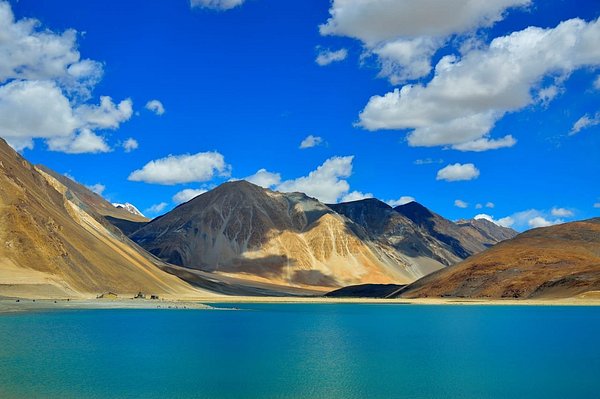Leh, India – Travel Tips
Category
Categories
Popular Articles

**Overview of the Destination**
Leh, India is the gateway to the stunningly beautiful, high-altitude region of Ladakh in the state of Jammu and Kashmir. Known for its majestic landscapes consisting of cold deserts, towering snow-clad mountains, serene monasteries, and pristine high-altitude lakes, it’s a paradise for adventurers and nature lovers alike. Its stark contrast of culture, cuisine, and landscape set it apart and make it a must-visit destination.
**Best Time to Visit**
The summer months between April and September are the best time to visit Leh because the roadways like the scenic Leh – Manali Highway and Leh – Srinagar Highway are accessible. If you wish to experience the snowy landscapes, head there in winters though be prepared for freezing temperatures and road blockages.
Major festivals in Leh like Hemis Festival in July and Ladakh Festival in September are cultural spectacles full of vibrant performances and ceremonies.
**Climate & What to Pack**
Given its high-altitude location, Leh experiences a cold desert climate. Summers are generally warm with temperatures sometimes hitting up to 25°C while winters can drop below freezing point. It’s advisable to pack a mix of warm and light clothes, sunglasses, sunscreen, lip balm, and sturdy walking shoes. A water purifier bottle and personal medication, if any, are also recommended.
**Getting There**
Kushok Bakula Rinpoche Airport in Leh is a domestic terminal connected with major airports like Delhi, Srinagar, and Jammu. International travelers can transit via these airports. From the airport, pre-paid taxis are available to reach the main city. Indian tourists don’t require any special permits whereas foreign tourists need to obtain Inner Line Permit for visiting certain areas.
**Getting Around Locally**
Public buses ply to nearby areas but are often crowded. Taxis, both shared and private, are widely available. Rental bikes and scooters are popular among tourists for exploring the nearby regions. Walking is a pleasant option within the city.
**Safety Tips**
Leh is a generally safe city for travel. However, sudden altitude change could lead to Acute Mountain Sickness, so take necessary precautions and acclimatize first. Dress modestly when visiting religious places and always ask for permission before clicking pictures of locals.
**Top Things to Do & See**
Apart from marveling at the ethereal beauty of the Pangong Lake, visit the centuries-old Thiksey and Hemis monasteries. Enjoy a double-humped camel ride in Nubra Valley and if adventure’s your thing, trekking on the frozen Zanskar River, commonly known as Chadar Trek, is a once-in-a-lifetime experience.
**Where to Stay**
Leh offers a range of accommodations. Luxury travelers can choose among Grand Dragon, Ladakh Residency, and Zen Ladakh. Omasila, Hotel Nalanda, and Shanti Guest House are good mid-range options. Zostel and The Nomadic Hostel are budget-friendly choices.
**Food & Local Cuisine**
Indulge in local delicacies like Thukpa (noodle soup), Momos (dumplings), and Skyu (a traditional Ladakhi dish). Try the unique Tibetan butter tea and local barley beer called Chang. The market area in Leh is laden with cafes and restaurants serving local, Indian, and International cuisines.
**Cultural & Practical Tips**
The local currency is Indian Rupee and Hindi, Ladakhi are the widely spoken languages. English is understood by most locals. Tipping is appreciated but not mandatory. Leh uses type C, D, and M plugs and voltage is 230V. Wi-Fi can be accessed at your hotel or numerous cafes but expect intermittent connection.
**Sustainable or Responsible Travel Tips**
Avoid plastic bottled water instead use recyclable or purifier water bottles. Be respectful towards the local culture and do not disturb the wildlife. Follow ‘leave no trace’ policy in natural spots and wilderness areas. Use local transport and stay/eat in local homestays/eateries to support local economy.
**Personal Tip**
Leh’s altitude sickness can hit you hard if you are not properly acclimated. Spend the first two days resting, eating light, and hydrating a lot before venturing out to explore. Enjoy your trip and respect the tranquillity of this paradise.










